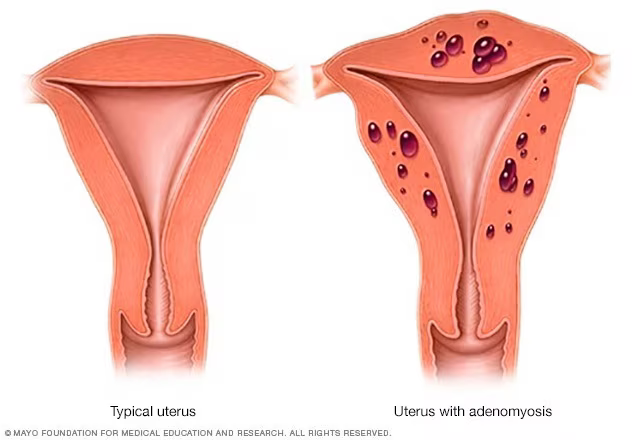Adenomyosis
Adenomyosis is a common but often overlooked condition where the tissue that normally lines the inside of your uterus (the endometrium) grows within the muscular wall of the uterus (the myometrium). This can cause the uterus to become enlarged and tender, leading to symptoms that can impact your daily life.

What Are the Symptoms?
If you have adenomyosis, you might experience:
- Heavy, prolonged, or irregular periods
- Severe cramping and pelvic pain, often worsening over time
- A feeling of pressure or fullness in your lower abdomen
- Pain during intercourse
- Fatigue, sometimes due to heavy bleeding and resulting anaemia
Because these symptoms overlap with other conditions like fibroids or endometriosis, adenomyosis can be tricky to diagnose without expert evaluation.
How Is It Diagnosed?
Diagnosis usually involves:
- Detailed pelvic ultrasound, especially transvaginal scans
- Sometimes MRI if ultrasound results are unclear
- Careful review of your symptoms and medical history
The goal is to differentiate adenomyosis from other conditions and tailor treatment accordingly.
Treatment Options
While there’s no “one-size-fits-all” cure, several treatments can help manage symptoms and improve quality of life:
- Medical therapies such as hormonal treatments (combined contraceptive pills, progestins, or GnRH analogues) to reduce bleeding and pain
- Minimally invasive procedures in select cases
- Hysterectomy, which is the definitive treatment, usually considered when symptoms are severe and other treatments haven’t helped
I’ll work with you to choose a plan that respects your wishes around fertility, symptom relief, and overall wellbeing.

Dr Sam Holford
It matters
Living with adenomyosis can be exhausting, but understanding your condition is the first step towards better management. You deserve care that listens to your experience and offers real solutions.
Book an appointmentFAQs
Resources
Please note: This information is general in nature and not a substitute for medical advice tailored to your specific situation.
